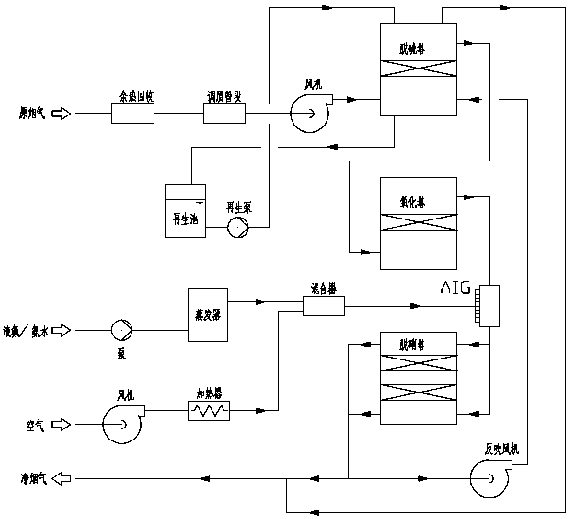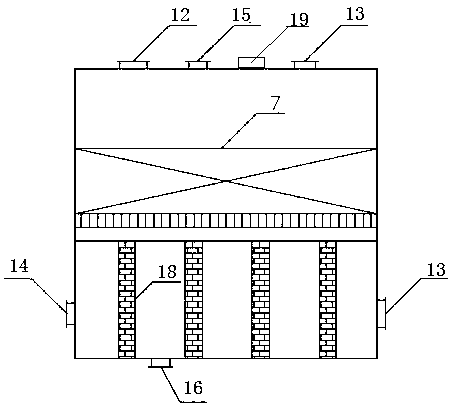Novel catalytic desulfurization and denitration apparatus and technology aiming at coke oven flue gas
A technology for desulfurization, denitration and flue gas, which is applied in the field of coke oven flue gas purification, can solve the problems of high energy consumption, low flue gas temperature, and can not meet the temperature requirements of alum-based catalysts, and achieves low energy consumption, simple regeneration process, Small footprint effect
- Summary
- Abstract
- Description
- Claims
- Application Information
AI Technical Summary
Problems solved by technology
Method used
Image
Examples
Embodiment Construction
[0055] The present invention will be further described below in conjunction with the accompanying drawings and embodiments.
[0056] Such as Figure 1-Figure 3 As shown, the new catalytic desulfurization and denitrification device for coke oven flue gas, the catalytic desulfurization device is equipped behind the exhaust port of coke oven flue gas, and the catalytic desulfurization device includes the outlet through the coke oven flue gas Waste heat recovery device connected by pipes;
[0057] The waste heat recovery device is also connected to the flue gas conditioning system through a pipeline, and the flue gas conditioning system is also connected to the flue gas inlet 11 of the desulfurization tower through a pipeline provided with a blower;
[0058] The sulfuric acid outlet 16 of the desulfurization tower is communicated with the regeneration tank through a pipeline, and the regeneration tank is also communicated with the spray inlet 15 of the desulfurization tower throu...
PUM
 Login to View More
Login to View More Abstract
Description
Claims
Application Information
 Login to View More
Login to View More - R&D
- Intellectual Property
- Life Sciences
- Materials
- Tech Scout
- Unparalleled Data Quality
- Higher Quality Content
- 60% Fewer Hallucinations
Browse by: Latest US Patents, China's latest patents, Technical Efficacy Thesaurus, Application Domain, Technology Topic, Popular Technical Reports.
© 2025 PatSnap. All rights reserved.Legal|Privacy policy|Modern Slavery Act Transparency Statement|Sitemap|About US| Contact US: help@patsnap.com



